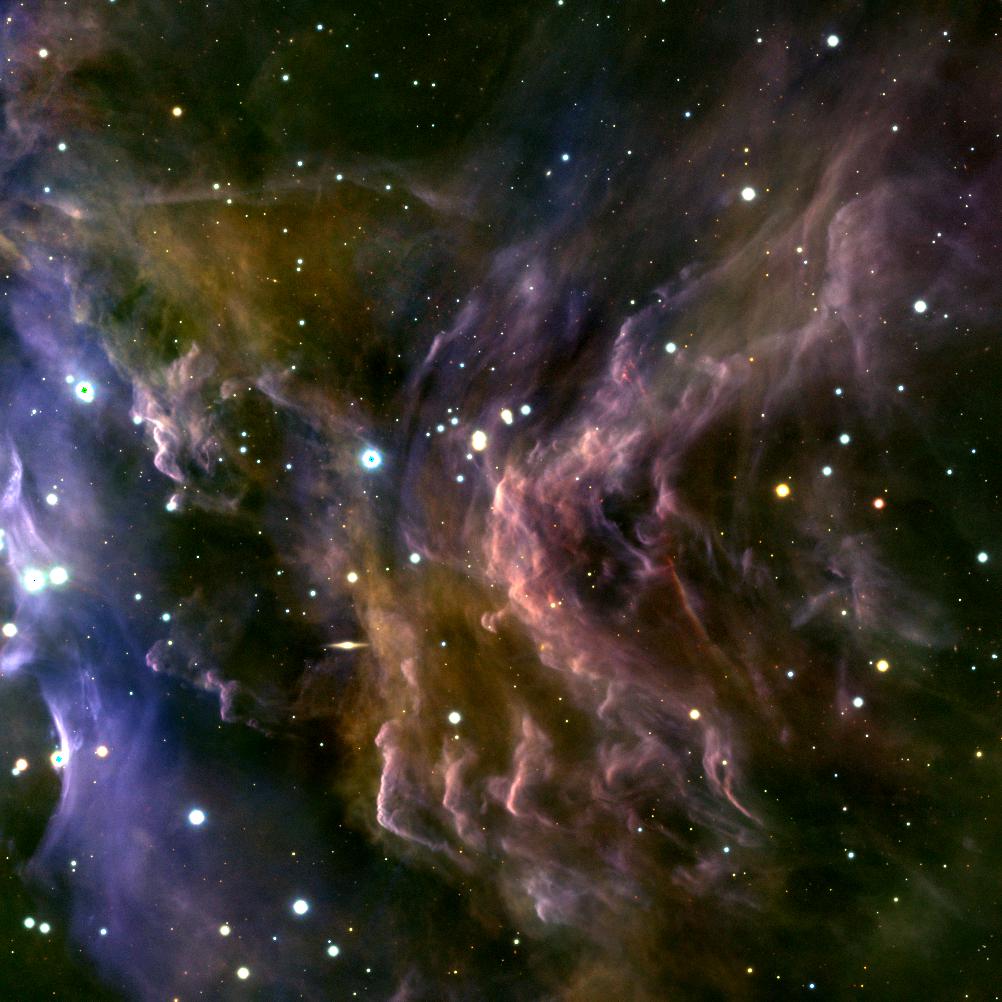Provides the ability to stretch and combine astronomical images from multiple bands into (RGB) colour images.
Project description
prepipy
PREtty PIctures using PYthon
Overview
This package provides the ability to stretch and combine astronomical images from multiple bands into (RGB) colour images.
Images can be created in two main modes:
- JPEG image containing only the image in the pixel scale of the input, including coordinate information readable by e.g. Aladin.
- DEVELOPMENT Matplotlib image containing one ore more RGB conmibations from different bands in a grid layout. World coordinate axes are plotted on the images if available in the original input files. An additional sup-header containing the source name can be included. This mode also supportes multiple different options, such as plotting grid lines on top of the image, marking the center point in the image, of marking additional points of interest within the image, specified by world coordinates. By default, these images are saved in the pdf format.
What does prepipy not do?
- Create an astrometric solution for input images. This must be provided in the FITS headers of the input images. Use a tool like e.g. SCAMP for this task.
- Resample the individual images to the same pixel scale. Input images must match exactly in terms of pixel scale, orientation and size (number of pixels along each axis). Prepipy assumes the input images can simply be added on a pixel-by-pixel basis. Use a tool like e.g. SWarp for this task.
Example image
Add text about example image, bands etc.
Basic Usage
JPEG mode
Current way to use from command line: run the rgbcombo script with arguments as described in the help message.
Matplotlib mode
Development feature, not part of the current release.
Input data
The input images are expected to fullfill the following criteria:
- FITS format images with the images data appearing in the primary HDU.
- Pixel scale and position matching across all input images. No additional resampling/reprojection is performed.
- WCS information is present in the FITS files.
Setting options
The package currently uses two YAML configuration files to specify various options. These are referred to as the (general) config file and the bands file containing meta-information about the bands used in the original data.
If these files are not placed in the working directory, the path to them needs to be specified using the -c and -b command line options.
Available classes
Band
Data class used to store information about a passband.
The recommended way to construct instances is via a YAML config file.
Use the Band.from_yaml_file(filename) constructor to do so.
Alternatively, a minimalistic instance can be created by just providing the band name: Band('foo'). This will create a useable instance with all other parameters containing default or placeholder values.
Frame
A Frame is an individual image taken in a given Band. Instances can be created manually or (recommended) either from a astropy.io.fits.ImageHDU object, astropy.io.fits.HDUList object plus an index or directly from a FITS file. Use the from_hdu(hdu_object, band), from_hdul(hdu_list_object, band, hdu_index) or from_fits(filename, band, hdu_index) contructors respectively.
Operations like clipping, normalisation and stretching are performed as methods of the Frame class. Individual frames can be saved as single-HDU FITS files (Frame.save_fits(filename)).
Picture
A Picture is a collection of one or more Frame objects. Frames can be added from a FITS file via Picture.add_frame_from_file(filename, band), where band can be an instance of Band or, in the minimalistic case, a string containing the band name only. Frames can also be added directly from a 2D numpy array: Picture.add_frame(image_array, band, header), where header can be an instance of astropy.io.fits.Header or None. A third option is to add Frame objects manually to the Picture.frames list. This has the downside that the frames's band is not checked against the other frames' bands already present in the picture. Normally, only one frame per band is allowed in a picture.
It is also possible to construct a Picture object from a 3D array containing 2D images, or to construct multiple instances from a 4D array. Warning: These features are currently highly experimental, not tested and not well documented.
The Picture class also provides a number of convenience properties, including bands, primary_frame, image, coords, center, center_coords, center_coords_str, image_size, pixel_scale and image_scale.
Subclasses of Picture
RGBPicture - subclass of Picture for handling 3-channel color composite images. A color channel is just a Frame object that is included in the RGBPicture.rgb_channels list. This attribute is set by calling the select_rgb_channels(combination) method. It is possible (and intended) to provide more than three frames for a RGBPicture, if multiple color composite images from different band combinations are desired. In this case, select_rgb_channels(combination) is called multiple times. Some operations modify only the frames which are set as color channels, so when processing multiple combinations, deep copies of the frames are created before they are modified as color channels.
JPEGPicture - subclass of RGBPicture for saving the final image as a JPEG (aka jpg) file. Currently one contains one method, save_pil(filename, quality), which uses the interface provided by the Pillow package (version 9.4+ is required) to save the image. NOTE: in most cases, this is the class you'll want to use when actually dealing with color composite images, unless you want to manually process the 3D array containing the 3-channel image data in some other way.
Acknowledgement
This package was initially developed in the course of the NEMESIS project at the University of Vienna. The NEMESIS project has received funding from the European Union's Horizon 2020 research and innovation programme under grant agreement No. 101004141.
Project details
Release history Release notifications | RSS feed
Download files
Download the file for your platform. If you're not sure which to choose, learn more about installing packages.

















